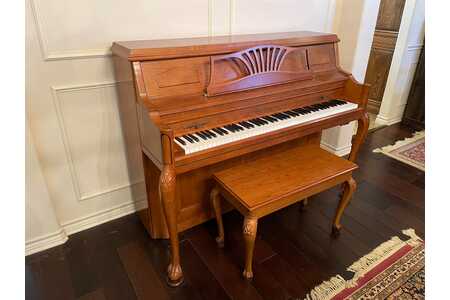
- WHAT IS THE VALUE OF A YOUNG CHANG UPRIGHT PIANO SERIAL
- WHAT IS THE VALUE OF A YOUNG CHANG UPRIGHT PIANO FREE
I think some pianos might cost so much to have rehabilitated that as is, they are not worth anything. I am leaning toward having someone check out the Kimball before we commit. We have also become aware of a Young Chang a friend has that I am guessing is from the 70’s or 80’s. The finish leaves some to be desired and my daughter said it seems “loud and louder”, however it is in a smallish room with hardwood flooring and she was trying it with the lid in the highest position. She described it as a baby grand, but it is about 76″ long.
WHAT IS THE VALUE OF A YOUNG CHANG UPRIGHT PIANO SERIAL
A close friend has offered to sell us her Kimball grand, (1938? serial 421888) for $1,500, claiming it is worth $4K. Our home piano is a Marantz-Grand console upright, nothing fancy. Rachel has been studying piano since kindergarten.

My daughter Rachel is a music performance major, emphasis on piano, at Southern Nazarene University in Bethany, OK, (Oklahoma City).
WHAT IS THE VALUE OF A YOUNG CHANG UPRIGHT PIANO FREE
If you have any questions or comments feel free to send me emails. Hope you appreciate a bit more about the importance of the pinblock. So, the short answer to this is that you can re-string a piano twice before having to consider replacing the pinblock. Generally, you will not want to go past 6-op pins. So if you replace 2 op pins you will most likely be using 4-op pins. Generally, you will use a pin 2 op larger than the last ones. When you re-string a piano you generally use larger pins for tension – so a slightly larger pin must be used. When you first string a piano you use pins called 2-op (which represents thousands of an inch). Eventually, you reach a limit in pin size. However, you can only restring a piano so many times before you have to replace the pin block because each time you restring, you use larger pins. Eventually, a piano will have to be restrung. Sometimes you have to replace the pinblock even if everything is working fine. If the pinblock is cracked, larger pins will just enlarge the cracks! Sometimes this problem can be fixed by using a larger pin size (more about that shortly) but it could potentially make the problem worse. If you tune the strings and the pins begin to slip when you apply tension to them, there is likely an issue with the pinblock. The first thing that will point to problems with your pinblock is if your piano is unable to hold its tuning. So how do you tell if your pinblock needs to be replaced? It requires a bit of detective work. However, the bottom is not where most of the problems are – they are hidden from view. If you remove the fallboard and pull the action out of the piano, you will be able to see the bottom of the pinblock and inspect it. Unfortunately, this incredibly important part of the piano can’t be inspected for problems easily. Its job is to keep the pins in place providing the tension necessary to keep the piano in tune. Needless to say, the pinblock is a crucial part of the piano. The rebuilding process is the only time you will be able to access the pinblock and replace it if necessary. This is basically taking out all the strings and removing the plate of the piano – usually using an engine hoist. What’s the Difference between Rebuilding and Reconditioning a Piano? You can learn about the process of rebuilding a piano in my video: The big problem with the pinblock is that if it’s in bad condition and needs to be replaced you have only one option rebuild the piano.

In fact, without a solid pinblock, you simply can’t tune your piano! The pinblock is a fundamentally important part of the instrument.

You have probably heard about a pinblock and you might have wondered what it is.


 0 kommentar(er)
0 kommentar(er)
